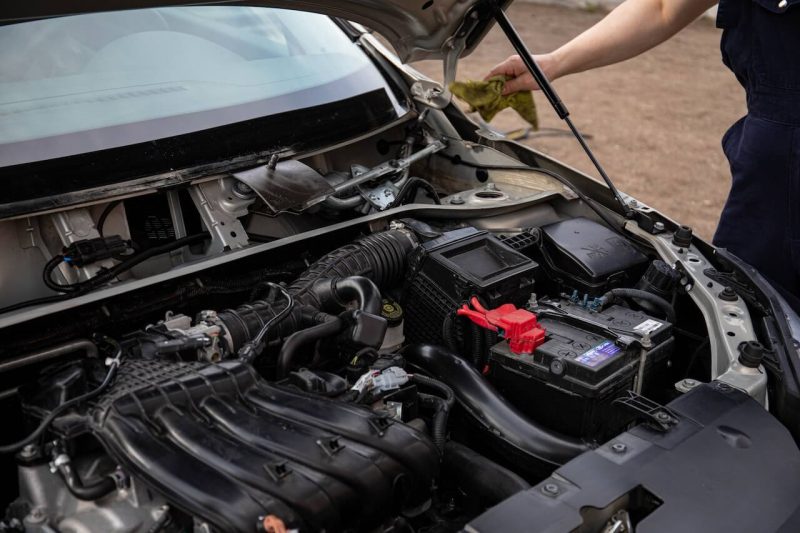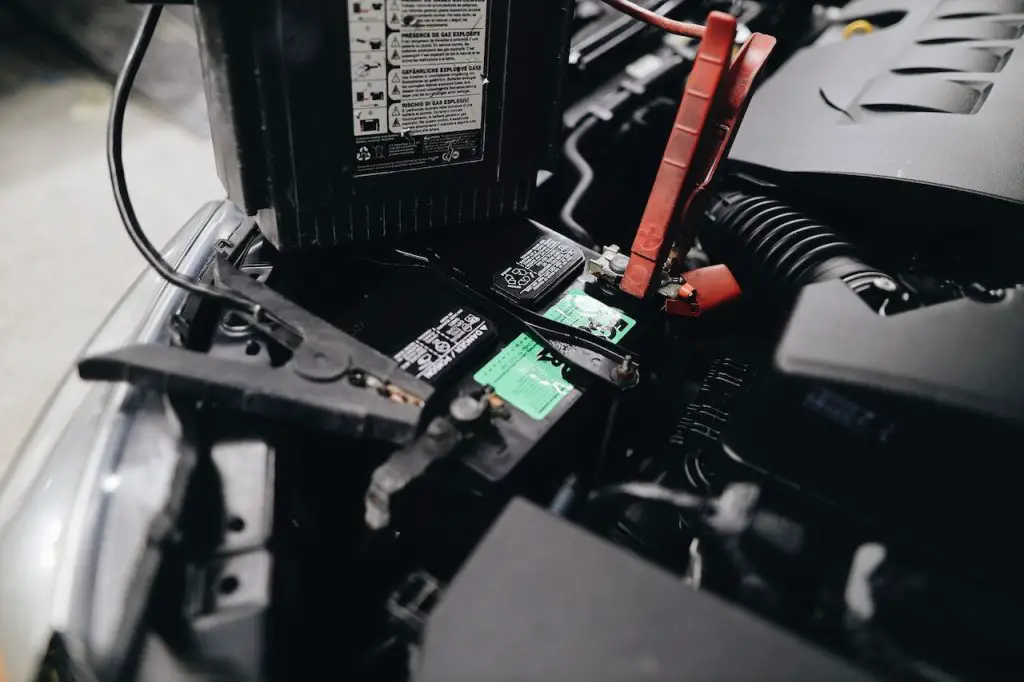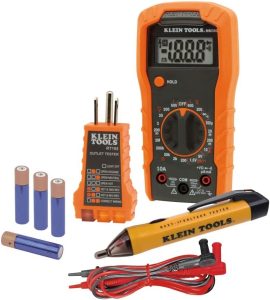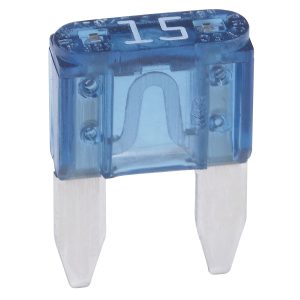A vehicle needs to have an efficiently running charging system to be able to function correctly. Without this, the car will rapidly drain its battery and leave you without power – inconvenient and hazardous. Therefore, your vehicle’s charging system must remain healthy and functioning correctly at all times. If a fusible link gets faulty, it causes major damage to a vehicle. Therefore timely replacing or repairing fusible links is important. I am writing this informational post to share symptoms of a bad fusible link.
As the foundation of all automotive charging systems, an alternator ensures that there is a continuous supply of voltage for vehicle operations and simultaneously recharges the battery. Without this vital process, our vehicles would quickly become incapacitated without warning – leaving us stranded from getting to our destinations as planned.
Table of Contents
What is a Fusible Link?
A fusible link is a critical component of any automotive electrical system and serves as the fuse for the charging system. It’s a small, usually color-coded wire that carries current from the alternator to the battery. If too much current flows through it, the wire will melt and disconnect, protecting other components from excessive voltage damage.
This is why it is so important to ensure that your vehicle’s fusible link is in proper working order at all times – otherwise, you risk damaging other vital parts or having your car break down on you with no warning. Additionally, suppose your vehicle’s charging system isn’t functioning correctly.
In that case, the fusible link shows severe problems such as worn-out bearings, loose connections, or a faulty alternator – all of which can be expensive to repair and could leave you stranded without power.
Fortunately, it is relatively easy and inexpensive to replace a fusible link if necessary. Many auto shops offer this service for a responsible fee, so make sure to get your vehicle checked out if you suspect any kind of electrical issue.
By replacing the fusible link when necessary, you can rest assured that your charging system will always be in optimal working condition. That way, you won’t have to worry about leaving yourself stranded in an inconvenient situation due to an easily preventable problem!
Symptoms of a Bad Fusible Link
These are symptoms of a bad fusible link:
Poor engine performance or stalling
Fusible links are designed to be the weakest link in an electrical circuit, meaning that if a problem occurs elsewhere in the system (such as a short or faulty wiring), the fusible link will burn out before any other parts become damaged.
However, this also means that if the fusible link becomes corroded or worn due to age or misuse, it may not trigger when needed, and fuel won’t reach the engine. This could result from poor performance or stalling of your vehicle’s engine.
If you suspect that your vehicle’s fusible link has gone bad and is causing issues with engine performance, it is essential to replace it immediately.
Electrical system failure
Fusible links can often cause an electrical system failure. If a link is damaged, corroded, or otherwise faulty, it cannot carry current and power all critical systems in the vehicle. This could lead to several components in your car needing to be fixed or completely inoperable. It’s crucial to check fusible links regularly for signs of rust or corrosion that may indicate a problem with the connection.
Intermittent starting: Your vehicle may usually start one time rather than the next. This could be because the link has become corrupted or blown due to too much current passing through it. A bad fusible link will often require a complete replacement of the link itself, as well as any associated wiring that may have been affected by the malfunctioning part.
No Start: If your vehicle does not start, this could indicate a blown fusible link. This is especially likely if you’ve noticed other electrical issues like flickering headlights or dimmed interior lights. A faulty fusible link might need to be replaced to get your vehicle running again.
Battery draining quickly
If the link is damaged or has a short, it can cause your vehicle battery to drain quickly. This could be due to power leakage from other components in the car, meaning that the battery won’t get charged properly.
Other issues caused by a bad fusible link may include:
- Warning lights flickering on and off
- Poor performance of electrical systems such as windows and headlights
- Overheating of certain parts due to increased resistance
Flickering or dim headlights
Another symptom of the bad fusible link is flickering or dim headlights. This can cause the electrical current to be disrupted, resulting in dim or flickering headlights. If a fusible link is broken, it must be replaced to restore proper illumination and protect other components from damage due to power surges.
Malfunctioning of fuel pump
If the fusible link has gone bad, it can stop current from passing through to power the fuel pump. This would prevent the vehicle from being able to start, as the fuel delivery system will be unable to function without a working pump. Or sometimes, the fuel pump work but needs to provide fuel to the engine correctly. It will cause the engine to have inaccurate acceleration.
Also Read: CAR SHAKES WHEN AC IS ON – REASONS & SOLUTION
What does a blown fusible link look like?
A blown fusible link will generally look like a wire or cable severed in two places. The breakpoints may be melted, charred, and distorted due to the heat generated when the fuse melts. In some cases, the insulation on the link may have turned black or brown as it was exposed to high temperatures. It is important to visually inspect the fusible link to ensure it is not just rusted or otherwise damaged.
If the breakpoints are too small to be seen with the naked eye, an ohm meter can be used to check for a break in continuity. If there is no connection between two ends of the fusible link, then it has been blown and must be replaced.
How to test a fusible link?
Testing a fusible link is a relatively straightforward process that can save time and money compared to replacing the entire fuse. You will need an ohmmeter or multimeter and some insulated pliers to test a fusible link.
First, start by disconnecting the wire from the electrical system. Then connect one lead of your ohmmeter or multimeter to one end of the fusible link and the other lead to the other end. If your meter reads zero resistance, then it indicates that there is no fault in the fuse and it’s functioning properly. However, if it reads higher than normal, typically showing an open circuit, you should replace the fuse immediately.
Once you have determined that the fuse must be replaced, you must take precautions to protect yourself from sparks or shocks. Use insulated pliers to remove the fusible link and carefully place it aside while you install the new one. Ensure you reconnect the wires securely and recheck your meter to verify no resistance in the fuse.
You can prevent potentially dangerous situations by taking a few simple precautions when testing or replacing a fusible link. Remember, safety comes first!
How to Replace a Fusible Link?
- Locate the fusible link: The fusible link is usually found on the firewall or near the battery of most vehicles. It looks like a wire with two metal ends and usually a plastic covering.
- Disconnect the battery: To avoid any electrical problems, it’s important to disconnect the battery first by removing both terminals from the battery.
- Remove old fusible link: Using two pairs of pliers, pull off each end of the old fusible link from its terminal connection point and discard accordingly.
- Install new fusible link: Use your new fusible link and connect each end of the new link to its corresponding terminal connection point using two pairs of pliers again.
- Reconnect battery: Once the new fusible link has been installed, reconnect your battery and start your vehicle to test it.
It’s essential to replace a faulty fusible link as soon as possible to prevent any further electrical damage from happening to your vehicle. Taking the time to replace a faulty one can save you a lot of money and potential hassle in the long run. Remember always to use caution when working with the electrical components of your vehicle.
Fusible Link VS Fuse
Fuse and fusible link are both essential components in any electrical system. While they may seem similar, they have a few key differences.
A fuse is a device that interrupts the flow of electricity when it senses an overload or short circuit. It creates an open circuit to divert the current from its intended path. Fuses can be reset after the issue has been resolved and the power source indicated as safe again.
On the other hand, a fusible link is an integral part of many safety systems designed to protect equipment, wiring, and components against fire hazards caused by excessive currents or voltage levels. Unlike a fuse, a fusible link cannot be easily reset and must be replaced when triggered.
This is because it operates by melting due to the heat generated by an overcurrent situation, thus permanently breaking the circuit and preventing a fire from occurring.
Fusible links can be installed in various electrical systems and are designed to protect the system from damage due to an overload or short circuit. However, if these links become exposed to too much current, they can blow, interrupting service. Common causes of fusible link failure include:
Overloading: Overloading occurs when too much current is drawn through the link for its rated capacity. This could be caused by users adding devices that draw more power than the link was designed for. It could also occur if a malfunctioning device on the circuit draws more power than average.
Short Circuits: A short circuit happens when two wires touch one another, bypassing the circuit’s resistance and creating a direct flow of current. This can cause excessive current to pass through the link, leading to its failure.
Corrosion or Damage: If a link becomes corroded or physically damaged, it may fail when exposed to normal current levels. Additionally, exposure to heat can weaken the metal and reduce its ability to handle normal currents without failing.
Component Failure: If any other component in the system fails and bypasses protection features such as fuses or circuit breakers, then too much current could be allowed to pass through the fusible link, leading to its failure.
Also Read: Key Start System Problems
FAQ’S
How to Protect Fusible Links From Blowing?
To protect fusible links from blowing, proper sizing for the application is necessary and follows safe installation practices.
The most important step when using fusible links is to choose the right size for the application. If a fuse link is too small, it will blow more easily under normal operating conditions, while one too large will not provide adequate protection against shorts and overloads. It is also important to select the appropriate amperage rating for the application.
When installing fusible links, it is essential to follow proper safety practices. This includes ensuring that all connections are secure, using the right type of wire insulation, and using adequately rated fuse holders.
Additionally, a fuse block should be mounted in an accessible area and clearly labeled as to its purpose and ratings so that it can be easily disconnected if necessary. Inspecting fusible links regularly for signs of wear or damage that could cause them to blow prematurely is also important.
Is It Safe to Drive With a Blown Fusible Link?
No, it is not safe to drive with a blown fusible link. A fusible link is an electrical safety device that acts as a fuse for the entire vehicle’s electrical system. When the current passing through the fusible link exceeds its rated capacity, it will melt and break the circuit, cutting off power to protect sensitive components in your car from being damaged by too much electricity.
If a fusible link is blown, it has already been exposed to too much current and can no longer provide protection. Driving with a blown fusible link could seriously damage your car’s electrical system or even cause a fire hazard.
What Does It Cost to Replace Fusible Links?
The cost to replace fusible links varies depending on the complexity of the repair and the type of vehicle. Generally speaking, you can expect to pay anywhere from $50-$500 for parts and labor. This can vary widely between different makes and models of vehicles, so it’s vital to get an estimate from a qualified technician before starting any repair work.
Consider purchasing new fusible links instead of repairing existing ones, depending on your budget. New fusible links usually carry a warranty and are less likely to malfunction than their older counterparts.
Additionally, if you need help finding compatible replacement parts for your particular make and model, consider consulting with a local auto parts store or mechanic specializing in that make and model. They can offer better pricing and availability of the parts you need.
Can I Use a Fuse Instead of a Fusible Link?
No, you cannot use a fuse instead of a fusible link. Fuses and fusible links serve two very different purposes, and their respective roles must be respected to ensure safety. Fuses are designed to act as an overcurrent protection device. In contrast, fusible links are used as an overcurrent disconnecting device.
Fuses contain a conductive material that melts when the current passing through it exceeds its rated capacity. This causes the circuit to open, preventing further damage or danger from occurring due to an excessive electrical current. The melting point of these materials fluctuates based on the kind of fuse and amount of current present.
Conclusion
In conclusion, a bad fusible link can cause significant damage to your car if not addressed quickly. To ensure your safety, it is imperative to frequently monitor the condition of your fusible link and promptly replace it at the slightest indication of wear or damage.
Fusible links are an inexpensive way to protect your car from electrical surges, but they need to be replaced once they fail for them to do their job correctly. Catching a faulty fusible link could save you time and money in the long run. By taking proper care of your vehicle’s electrical system through regular maintenance and inspection, you can help ensure its safety and longevity.












